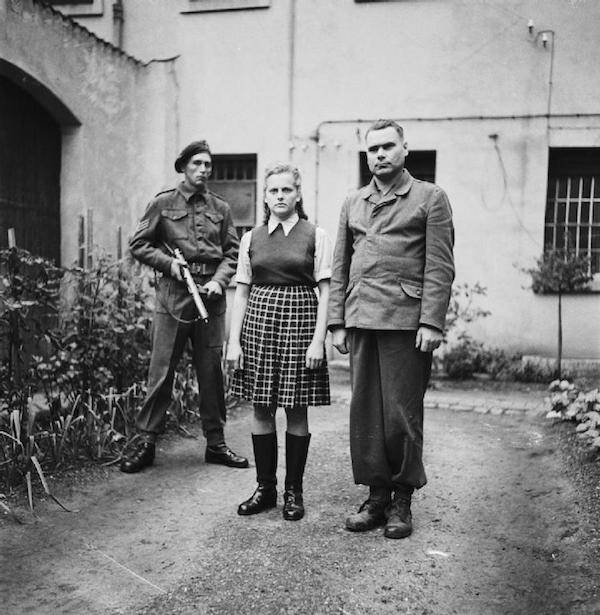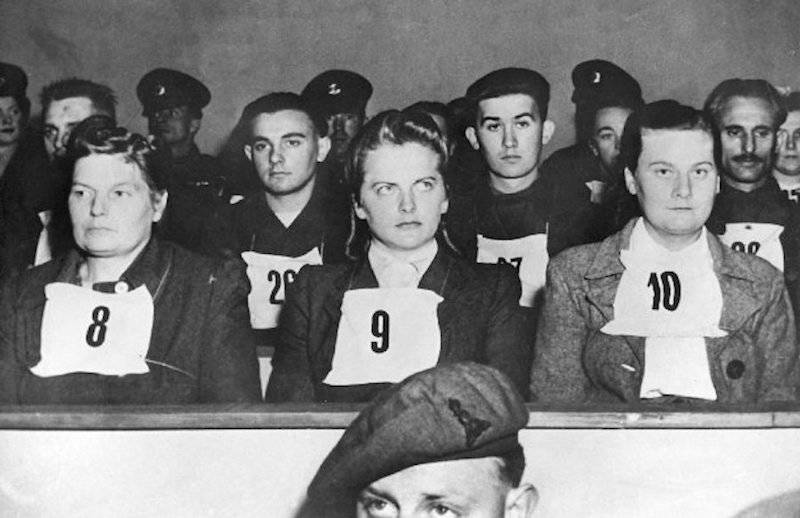From the infamous Dr. Josef Mengele to the notorious propaganda chief Joseph Goebbels, Adolf Hitler's Nazi associates are often equated with sheer malevolence.
Among these notorious figures, Irma Grese stands out as particularly savage. Described by the Jewish Virtual Library as "the most notorious of the female Nazi war criminals," her atrocities were exceptionally cruel, even by the standards of her fellow Nazis.
Irma Grese was born in the autumn of 1923, the middle child among five siblings. Trial records reveal that 13 years later, her mother took her own life after learning of her husband's affair with the daughter of a local tavern owner.
Grese's childhood was fraught with challenges, including difficulties at school. Her sister Helene recounted that Grese was severely bullied and struggled to defend herself. Overwhelmed by the relentless bullying, she left school as a teenager.
To make a living, Grese first worked on a farm and later in a retail shop. Like many of her compatriots, she was captivated by Hitler's rhetoric. By the age of 19, the school dropout secured a position as a guard at Ravensbruck, a concentration camp for women.
The following year, in 1943, Grese was transferred to Auschwitz, the largest and most notorious of the Nazi extermination camps. As a committed and obedient Nazi, she quickly climbed the ranks to become a senior SS supervisor, the second-highest rank achievable by women in the SS.
 Irma Grese, "The Beautiful Beast" And A Notorious Nazi Guard
Irma Grese, "The Beautiful Beast" And A Notorious Nazi Guard In her high-ranking position, Irma Grese wielded immense power, which she used to inflict severe and deadly sadism on the prisoners. While the specifics of Grese's cruelty are difficult to confirm — and scholars like Wendy Lower caution that accounts of female Nazis are often tainted by sexism and stereotypes — the heinous nature of her actions firmly establish her as deserving of the moniker "the Hyena of Auschwitz."
In her memoir Five Chimneys, Auschwitz survivor Olga Lengyel recounts that Grese engaged in numerous affairs with fellow Nazis, including Mengele. Lengyel observed that when selecting women for the gas chambers, Grese would often choose the most attractive prisoners out of jealousy and spite.
Professor Wendy A. Sarti's research highlights Grese's cruel inclinations, such as her tendency to strike women across their breasts and to coerce Jewish girls into serving as lookouts while she raped other inmates. Moreover, Sarti documents that Grese would set her dog on prisoners, whip them relentlessly, and kick them with her hobnailed boots until they bled.
According to the Jewish Virtual Library, Grese also had lampshades made from the skin of three deceased prisoners.
 Irma Grese, "The Beautiful Beast" And A Notorious Nazi Guard
Irma Grese, "The Beautiful Beast" And A Notorious Nazi Guard However, as Allied forces began to dismantle the Nazi regime, Grese shifted from perpetrating atrocities to scrambling for her own survival.
In the spring of 1945, British forces arrested Grese, and she, along with 45 other Nazis, was charged with war crimes. Despite pleading not guilty, the overwhelming evidence from witness testimonies and survivor accounts of her brutal actions led to her conviction and subsequent death sentence.
Irma Grese was executed by hanging on December 13, 1945. At the age of 22, she became the youngest woman to be executed under British law in the 20th century.


















